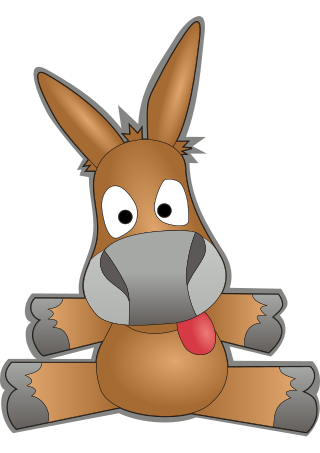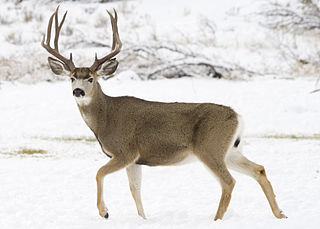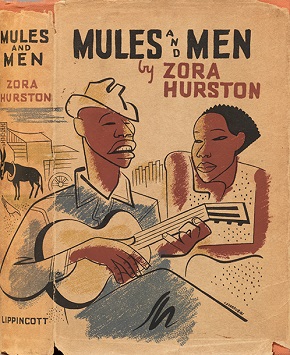Related Research Articles

The mule is a domestic equine hybrid between a donkey and a horse. It is the offspring of a male donkey and a female horse. The horse and the donkey are different species, with different numbers of chromosomes; of the two possible first-generation hybrids between them, the mule is easier to obtain and more common than the hinny, which is the offspring of a male horse and a female donkey.
Skinner may refer to:

aMule is a free peer-to-peer file sharing utility that works with the eDonkey network and the Kad network, offering similar features to eMule and adding others such as GeoIP. On August 18, 2003 it was forked from the xMule source code, which itself is a fork of the lMule project, which was the first attempt to bring the eMule client to Linux. These projects were discontinued and aMule is the resulting project, though aMule has less and less resemblance to the client that sired it.

The mule deer is a deer indigenous to western North America; it is named for its ears, which are large like those of the mule. Two subspecies of mule deer are grouped into the black-tailed deer.

Mule is a style of shoe that has no back or constraint around the foot's heel. Mules have a history going back to Ancient Rome but were not popularly worn until sixteenth-century Europe. There, mules were bedroom slippers and not worn in public. Through the centuries, mules have changed in style and purpose and are no longer just boudoir shoes but are worn at any time, for any occasion. In addition to Western examples, mules come from cultures such as Turkey and Egypt, and appear in popular culture, from famous paintings to iconic celebrities' shoes.
Mulesing is the removal of strips of wool-bearing skin from around the breech (buttocks) of a sheep to prevent the parasitic infection flystrike (myiasis). The wool around the buttocks can retain feces and urine, which attracts flies. The scar tissue that grows over the wound does not grow wool, so is less likely to attract the flies that cause flystrike. Mulesing is a common practice in Australia for this purpose, particularly on highly wrinkled Merino sheep. Mulesing is considered by some to be a skilled surgical task. Mulesing can only affect flystrike on the area cut out and has no effect on flystrike on any other part of the animal's body.
A mule is the offspring of a female horse and a male donkey.

A crupper is a piece of tack used on horses and other equids to keep a saddle, harness or other equipment from sliding forward.
The maguhu is a Chinese bowed string instrument in the huqin family of musical instruments. It has two strings and its sound box is made from the femur bone of a horse. The front end of the sound box is covered with snake skin, and the end of the neck is carved in the shape of a horse's head.

"Blue Yodel no. 8, Mule Skinner Blues" is a classic country song written by Jimmie Rodgers. The song was first recorded by Rodgers in 1930 and has been recorded by many artists since then, acquiring the de facto title "Mule Skinner Blues" after Rodgers named it "Blue Yodel #8".

The Best of Dolly Parton is a compilation album by American singer-songwriter Dolly Parton. It was released on November 9, 1970, by RCA Victor. The album was produced by Bob Ferguson. It includes some of Parton's early hits, a few non-single album tracks, and two previously unreleased tracks. The album peaked at number 12 on the Billboard Top Country Albums chart. The single, "Mule Skinner Blues " peaked at number three on the Billboard Hot Country Songs chart and earned Parton a nomination for Best Female Country Vocal Performance at the 13th Annual Grammy Awards. The album was certified Gold by the RIAA on June 12, 1978, for sales of 500,000 copies.

The Bluefaced Leicester (BFL) is a longwool breed of sheep which evolved from a breeding scheme of Robert Bakewell, in Dishley, Leicestershire in the eighteenth century. First known as the Dishley Leicester, and then the Hexham Leicester, because of the prevalence of the breed in Northumberland, the name Bluefaced Leicester became known at the beginning of the 20th century. In the 1970s, the Bluefaced Leicester was exported to Canada. Exported frozen semen from the United Kingdom is now used to expand the genetic diversity in Canada and the United States. It is raised primarily for meat.
The Fendermen were an American rockabilly duo, composed of Jim Sundquist and Phil Humphrey, active in the early 1960s. They are best known for the 1960 hit single "Mule Skinner Blues", a cover of a song written by Jimmie Rodgers.

20 Mule Team is a 1940 American western film directed by Richard Thorpe and starring Marjorie Rambeau, Anne Baxter and Wallace Beery, who appears with his nephew Noah Beery Jr. The film was originally released in sepia-tone, a brown-and-white process used by the studio the previous year for the Kansas scenes in The Wizard of Oz.

Chief Executive is a business magazine published by Chief Executive Group, LLC.

An arriero, muleteer, or more informally a muleskinner is a person who transports goods using pack animals, especially mules.
A muleskinner or mule skinner is a muleteer or mule-driver.
Animal-borne bomb attacks are the use of animals as delivery systems for explosives. The explosives are strapped to a pack animal such as a horse, mule or donkey. The pack animal may be set off in a crowd.

Mule spinners' cancer or mule-spinners' cancer was a cancer, an epithelioma of the scrotum. It was first reported in 1887 in a cotton mule spinner. In 1926, a British Home Office committee strongly favoured the view that this form of cancer was caused by the prolonged action of mineral oils on the skin of the scrotum, and of these oils, shale oil was deemed to be the most carcinogenic. From 1911 to 1938, there were 500 deaths amongst cotton mule-spinners from cancer of the scrotum, but only three amongst wool mule spinners.

Mules and Men is a 1935 autoethnographical collection of African-American folklore collected and written by anthropologist Zora Neale Hurston. The book explores stories she collected in two trips: one in Eatonville and Polk County, Florida, and one in New Orleans. Hurston's decision to focus her research on Florida came from a desire to record the cross-section of black traditions in the state. In her introduction to Mules and Men, she wrote, "Florida is a place that draws people—white people from all over the world, and Negroes from every Southern state surely and some from the North and West". Hurston documented 70 folktales during the Florida trip, while the New Orleans trip yielded a number of stories about Marie Laveau, voodoo and Hoodoo traditions. Many of the folktales are told in vernacular; recording the dialect and diction of the Black communities Hurston studied.
References
- ↑ Emmett M. Essin (12 March 2000). Shavetails and Bell Sharps: The History of the U.S. Army Mule. U of Nebraska Press. ISBN 0-8032-6740-1 . Retrieved 27 June 2018.